Kilimanjaro. Where do you begin? Route options, gear options, trip options… so many options but so many questions as a result. It is a big trip after all, meaning many random and common questions can come up. Some questions were easy to find answers to, but others were not. Here are some that came up for me and (hopefully) some useful answers from my own experience in October 2016.
How do I get there?
WhAt route should I choose?
do I have to go with a company?
What company did you go with?
What shall I pack?
How much money do I need?
What time of year is best to go?
How fit do I have to be?
Is it safe?
Where do I stay?
What do you eat?
Creature comforts?
What are the days like?
Is it common to become unwell?
How should I spend the rest of my time in tanzania?
how do i get there?
Treks start in Moshi or Arusha what are about 1.5 hours apart. International flights land at Kilimanjaro International Airport that serves both these starting points. From the UK there were no direct flights, so I flew via Amsterdam with KLM on the way, and on the way back I flew out of Zanzibar via Nairobi with Kenyan Airways.
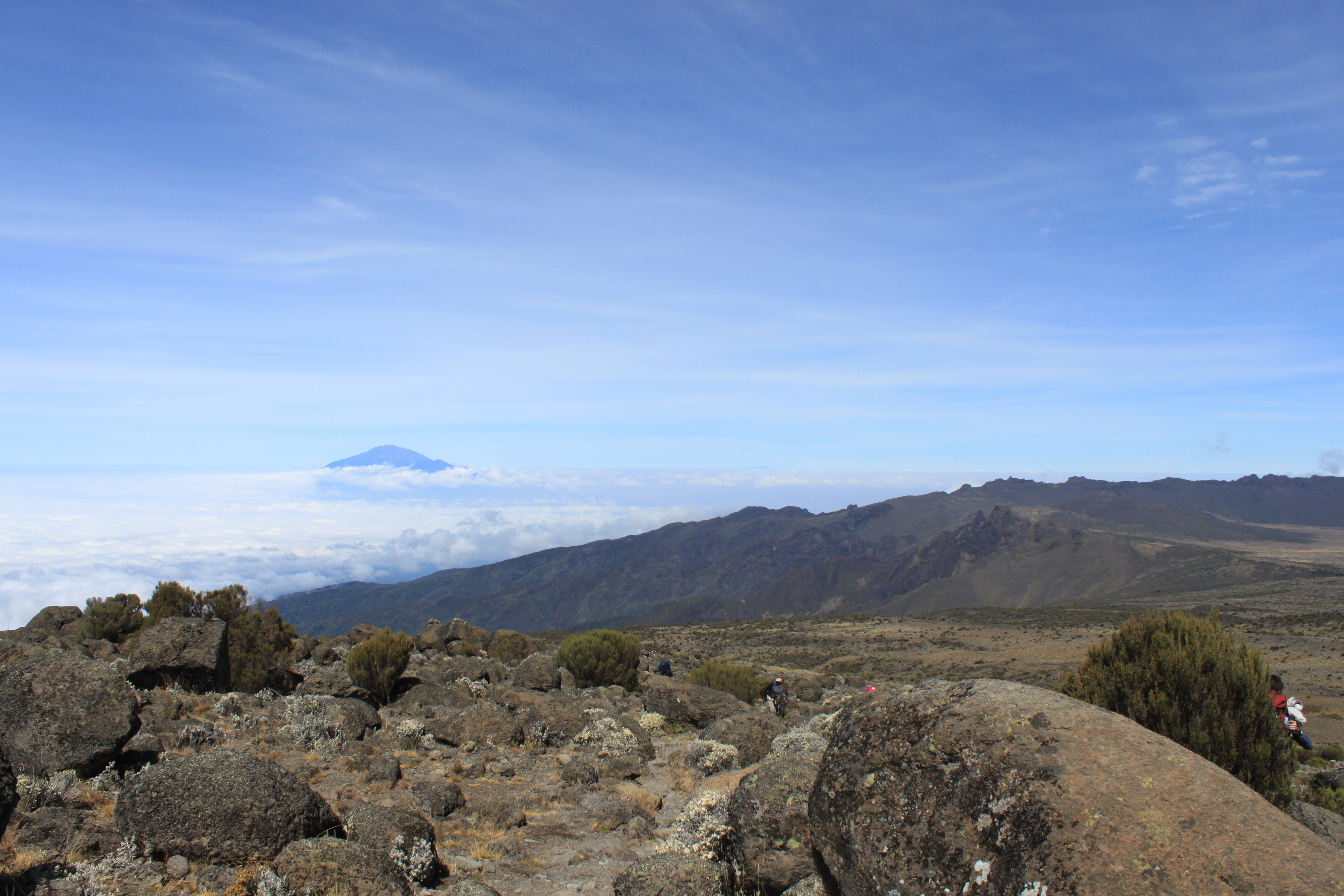
WHAT ROUTE SHOULD I CHOOSE?
It depends on time, budget and desired experience. There are seven main routes: Marangu, Machame, Lemosho, Shira, Rongai, Northern Circuit and Umbwe. Recommended routes tend to be Machame, Lemosho, Northern Circuit and Rongai.
To note, the Marangu route (also known as the coca-cola route) is the only route with huts for accommodation instead of camping, and uses the same route for descent making it crowded. It is good for those on a budget and time-limit, as it can be completed in 5 days.
I decided on the Machame route (6 days) but added a 7th day for acclimatisation. Why? Because the slower the ascent, the greater chance of summit success as your body has longer to adapt to the altitude. I was pleased I did this as 6 days would have meant a day of walking for 5-7 hours, then a few hours sleep before summiting for another 7 or so hours before descending for up to 6 hours! An extra day allowed us to split the pre-summit climb.
The Machame route is popular, due to the scenery and success rate. I did not notice too much traffic asides from the crawling headlights of everyone on summit night (what is quite a spectacular sight). When you arrive at your camp for the night it is quite unbelievable at how far it stretches.
Rongai is the only route starting from the North. Lemosho and the Northern Circuit (what have parts that overlap) are increasing in popularity due to their success rates, low traffic and scenery. Usually these routes take 8-10 days. It allows you to stay at Crater camp at around 18,800 ft, what is right by the summit and Furtwangler Glacier.
Most routes descend via the direct and less scenic eighth route: Mweka. This is also used by sherpas to transport supplies up and down the mountain.
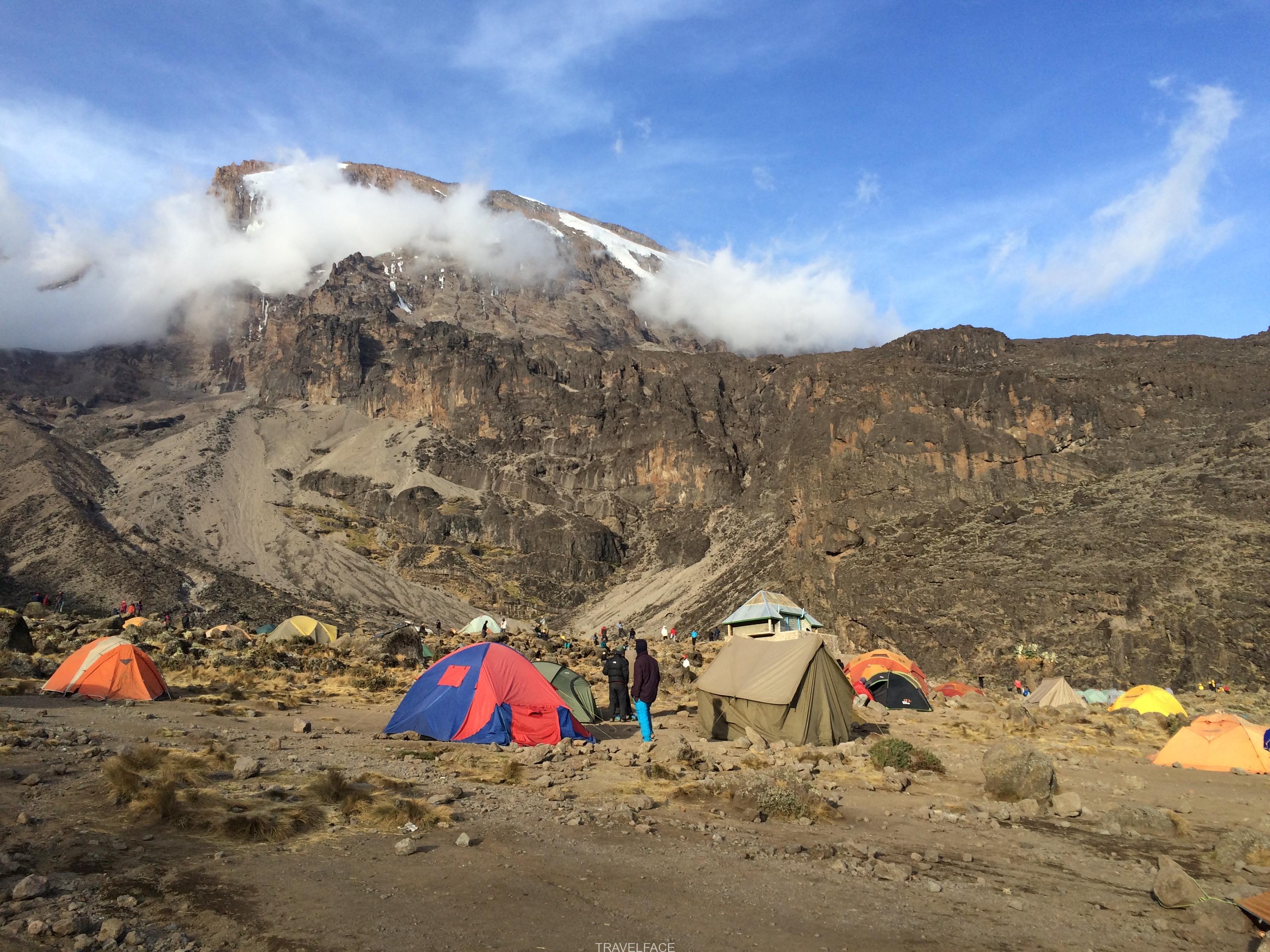
do i have to go with a company?
Regulations require you to register for the trek with a guide. My guide had taken a couple of experienced mountaineers who guided on Everest and wanted to carry their own gear (unfortunately one could not summit due to altitude sickness. Kilimanjaro is no walk in the park!). This requires proper planning and permission.
Most standard packages include porters to carry adequate gear: tents, gas, food and trekkers’ main bags. Ratios of porters to trekkers tend to be around 1:4, what can feel ridiculous before you begin. However when you see what work goes into cooking, setting up camp, and carrying all needed supplies, you realise how important every single porter is to the operation. Without them it would not be possible for most to experience Kilimanjaro.
WHat company did you go with?
Seregenti Pride Safaris. Click to go to their website.
I wanted to go with a local company registered with the organisations IMEC (International Mountain Explorers Connection) and Kilimanjaro Porters Assistance Project (KPAP). This basically means that the companies meet guidelines for fair treatment of porters and crew. These guidelines include a fair wage, a weight-limit on gear carried by each porter, adequate gear, all meals and sleeping areas for crew, opportunities for development, and medical assistance for them if required.
I basically went through the list and randomly selected a few companies to email. Seregenti Pride were quick and helpful in their response, with a seven day Machame option. The trip cost included a lot more in comparison to similarly priced international companies. For example airport pick up, a portable toilet (welcomed over the public ones at campsites), safety gear and accommodation before/ after the trek.
I would recommend Seregenti Pride. Incredible guides, porters, food, accommodation before/after, and quality of gear provided such as tents made them stand out. It often felt quite luxurious! They also arranged my safari beforehand and have other excursions on offer.
what shall i pack?
See this post for some packing suggestions.

how much money do i need?
On the trek you do not need any money as everything is included. Your company should list what is included in the total trip cost, but generally it should include the park fees set by the government. Check at time of booking.
On average: Mid-range trips tended start around $1500 and go up to $3000. Whilst it may be possible to find cheaper options seriously do your research into the company and what is included. There is no point going with a company that cuts corners to get the price down. I paid around $2,500 but Seregenti Pride has since increased prices.
Some points:
- I took my money for the tour and tips in envelopes. Tipping is well-established in Tanzania. There tends to be guidelines and an official tipping ceremony at the end of your trek. Ours also included the distribution of donated gear. Tip what you can afford but you will wish you could give more. My guidelines were $20-35 dollars per day for the crew, and around $100 in total for the head guide.
- Visa: You pay on arrival, usually in dollars. Single-entry as a UK citizen was $50.
- Insurance insurance insurance: Include hiking at altitude and medical evacuation. I used TrueTraveller. This cost around £50.
- Gear cost: Usually companies offer gear rental. I hired a sleeping bag. I have read that you can also hire gear in Arusha. Cheaper stores in the UK such as Decathalon also offer good value gear so shop around.
- International flights: I only booked a month or so before. The expensive flight was to Zanzibar with Precision Air from Arusha. This cost nearly $250! I did not have time to bus and ferry there but this is a cheaper option.
- A requirement is that US dollars are no more than 10 years old. Change some into Tanzanian shillings for personal spending. You can do this at the airport or in Arusha if you have time.
what time of year is best to go?
Tanzania has dry and wet seasons, so whilst Kilimanjaro can be climbed year round, it is said that June- October, and late December- March tend to be the most pleasant and best times to climb for ease, weather and visibility. What comes with this are obviously the crowds who have read the same advice. However I tended to find it was only once arriving in camp that you gained some idea of how many people were actually on the mountain at a given time.
Heavy downpours can still occur though the weather was dry and clear throughout our hike. I can imagine it being tough especially on day one and descent through the rainforest if it is wet, due to the muddy trail, so consider if you are an experienced enough hiker to go off-season.
We ended up summiting during full moon, what you can plan for when booking, but I did not realise. This meant we did not need our head torches to summit though we still took them. I did not appreciate it so much at the time due to the cold and altitude, but seeing Kilimanjaro lit up by the moon with a trail of headlights from basecamp to summit, shooting stars above and Arusha’s lights twinkling below, was incredible.
Even if you have groups pass you, go slow. It is definitely not a race and you tend to keep crossing paths with the same groups anyway.
how fit do i have to be?
It is achievable for most with a basic level of fitness, as a porter is carrying your main bag. The fitter you are the more likely you are to enjoy it basically, altitude issues aside. One person in my group dropped out due to physically struggling with back pain, but he was 72! Walking and aerobic exercise is the best training to get your body prepared for the 4-7 hours a day of walking (albeit pole pole – slowly slowly). For me, and many others, summit night is the toughest physically and mentally. You are tired, most likely cold, walking at altitude and continuously uphill. As I had a fairly decent level of fitness it took away some of the discomfort.
At the time of the trip I had completed the Three Peaks Challenge in the UK and spent a few weekends doing one day 10km training hikes in the Brecon Beacons to get used to hill walking. I was also going to the gym and doing weights twice a week, plus swimming and spinning.
You could be a professional athlete and still succumb to altitude sickness. Often fitness does not help in the altitude department. It felt like I had ran a marathon when I walked several paces to brush my teeth before summit night, and often needed help rolling my sleeping bag up as I felt so weak each day! If you go with a group it is likely there will be different paces. Do not try to keep up. Go at a pace what works for you. Guides tend to have an assistant guide or a head porter who will walk with whoever is split off from the group.
is it safe?
The main risk is altitude sickness. Take it seriously and educate yourself on it before you go. Going with a well-reviewed company that supplies safety equipment and trains its crew appropriately is also recommended. After all it is said that there are around 10 reported deaths on Kilimanjaro each year, mainly due to altitude sickness, then falls and other problems such as heart attacks. Some routes are more risky such as the Western Beach route that sadly had an avalanche in 2006 during a snowstorm, killing hikers and crew who were there at the time. Many more get evacuated or told to descend from the mountain (up to 40%- around 12,000 people per year!). There is a point to which you can hike to a road to be transported down, after this it can be by makeshift stretcher.
read more about my thoughts on diamox here
Seregenti Pride trains their guides in first aid and crew carry kits including oxygen. They also used the Lake Louise scoring system (LLSS) with us each evening to monitor the impact of altitude on each of us. We had a pulse oximeter and questions asked about our appetites, toilet habits, and physical symptoms.
I know other groups who had a doctor as part of the team!
Also bringing the right gear, drinking enough and keeping warm are all common sense steps to avoid sunstroke, hypothermia and other alinements that can be easily prevented.
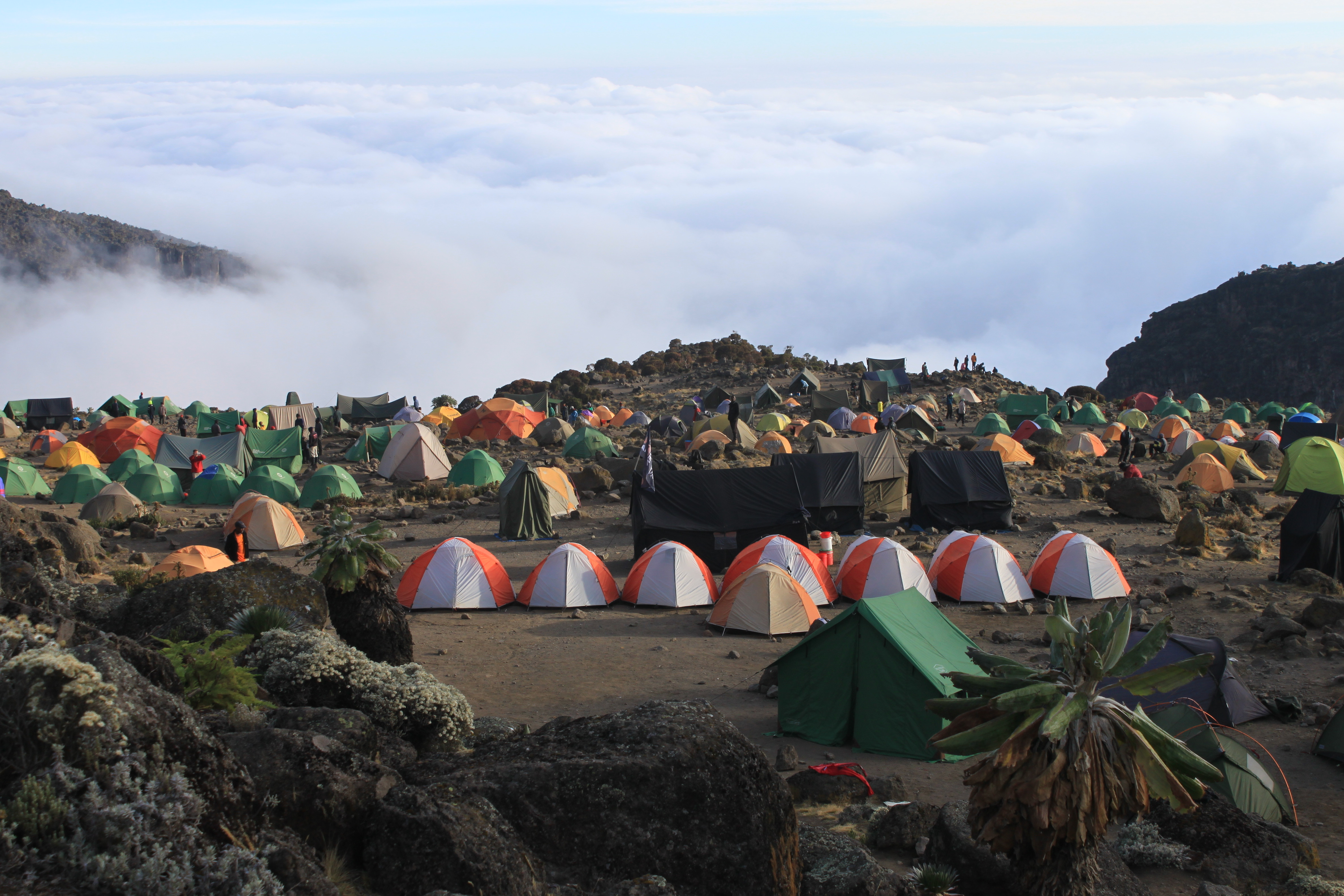
where do i stay?
Unless you are in huts on the Marangu (coca-cola route) you will be staying in tents at set camping sites. You register at each campsite. Usually the porters will have gone ahead and set up camp by the time you arrive. Our porters were amazing at finding good spots in the campsites. Some companies had flags and signs to make it easy to navigate back through the sea of tents to the right area.
I was lucky to be the only girl and third person so I had a tent to myself. The tents were good quality, and by reputable brands. Most companies also provide a ‘mess’ (dining) tent where you eat meals. Seregenti pride also carried a portable toilet set up in our camping area. It was in a tent, not a portaloo like some may imagine, though you do see some interesting items being carried by porters.
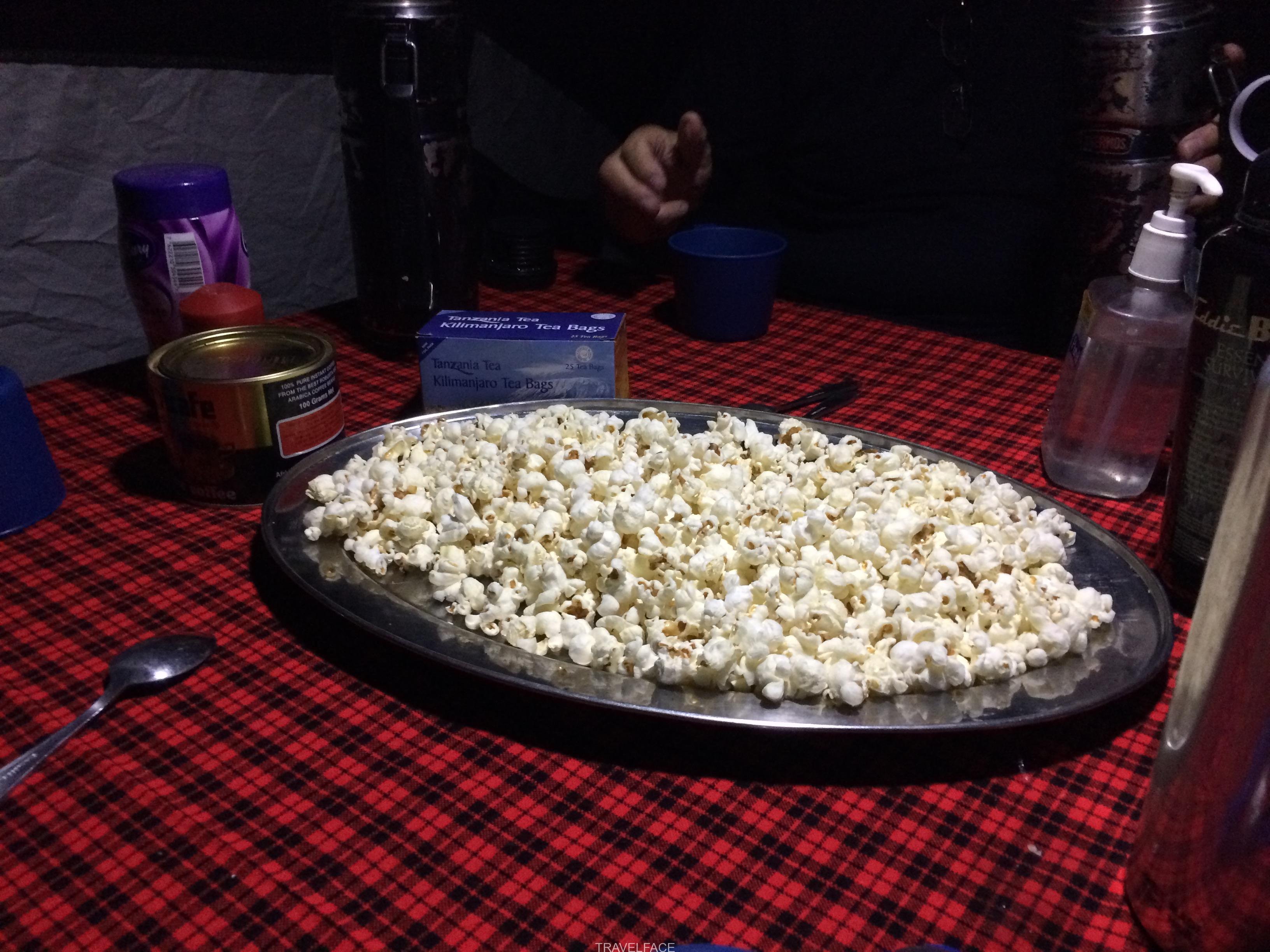
what do you eat?
Our cook pleasantly surprised me by creating nutritious and delicious meals on the mountain with limited resources. We were certainly spoilt; from soups to curries, toast, eggs and porridge, fruit, chips, pasta, meat and potatoes, and even avocados one day! Your company will prepare pack lunches or cooked meals in your mess tent. It is so important to eat a lot and often we ate a big tray of popcorn with Kilimanjaro tea when we arrived at camp for afternoon snack.
It is also useful to bring your own snacks to eat whilst walking. Check out my packing list for some suggestions.
Most companies try their best to adapt for those with dietary requirements, intolerances, vegetarians and general dislikes.
- Bring antibiotics if possible, along with laxatives and immodium. They came in handy for me the night before summiting. I also take probiotics when travelling.
- You can get an unsettled stomach from mild altitude sickness. Chewable gaviscon tablets can help with this.

creature comforts?
Asides from the food, the portable toilet was a luxury! I did not bother venturing into the public drop toilets and would carry any toilet paper in a ziplock bag to the next camp when I frequently darted off trail to go. A friend did use the drop toilets and recommended taking vick to put under your nose in order to make the smell more manageable.
Each morning a bowl of water was provided to wash. I tended to wash my face and hands, using baby wipes for showering purposes. My first shower back in Arusha was unbelievable. I also realised I was not as tanned as I thought, it was in fact mainly dust.
Bring a plastic bag to carry toilet paper and/or rubbish to the next stop.
what are the days like?
Companies will provide itineraries so check them out. Days tend to begin early, with 6am starts being common. Stanley, our head porter, used to bring a bowl of warm water, soap and a coffee to my tent each morning. After breakfast your camp will quickly disappear once you have packed up, filled up your water and left your bag outside your tent.
Days and distances vary in length from 4- 7 hours and 5k-10km on average. Often they feel significantly longer than this due to the altitude. One day we walked about 5km and could still see the previously camp, but it felt like 25km.
On the 7 day Machame route the longest day is summit night and descent, what is around 17km in total and obviously a lengthy day due to ascent taking around 7 hours, and descent taking up to 6 hours with a break back at base camp for a quick nap and food. For me this was the hardest day, with the second most challenging being a significant acclimatisation day. You reach 16,000ft around lunch time to see (and if you have the energy climb) Lava Tower, before descending back to 13,500ft to sleep.
You pass different climate zones from the rainforest to the artic, so the landscape and fauna changes frequently. By day 3 you are above the clouds what feels quite magical.
On summit night remember you hit Stella Point first that has its own sign. This is not the summit. The summit is another hour or so away.

is it common to become unwell?
It is common to experience mild altitude sickness of some description (headaches, unsettled stomach). As previously mentioned this can become serious if untreated. Be mindful of hypothermia (mainly a risk off-season but also on summit night), traveller’s diarrhoea and sunstroke.
Take a sufficient first aid kit and make sure your boots fit correctly. This is important for descent. Re-tye your laces to reduce risk of bruised and potentially lost toenails. Blisters are also possible throughout, so take the usual precautions. For me this is taping hot spots, wearing two pairs of socks and airing feet during breaks.
I took Vitamin C tablets each day, and used hand sanitiser, but did seem to develop a permanently runny nose (this charmingly froze on summit night). Antibiotics also saved the day when I had an unsettled stomach all night from an unknown source.
Always treat the water. I tended to treat the filtered water our company provided with carbon dioxide tablets. I did not treat boiled water.
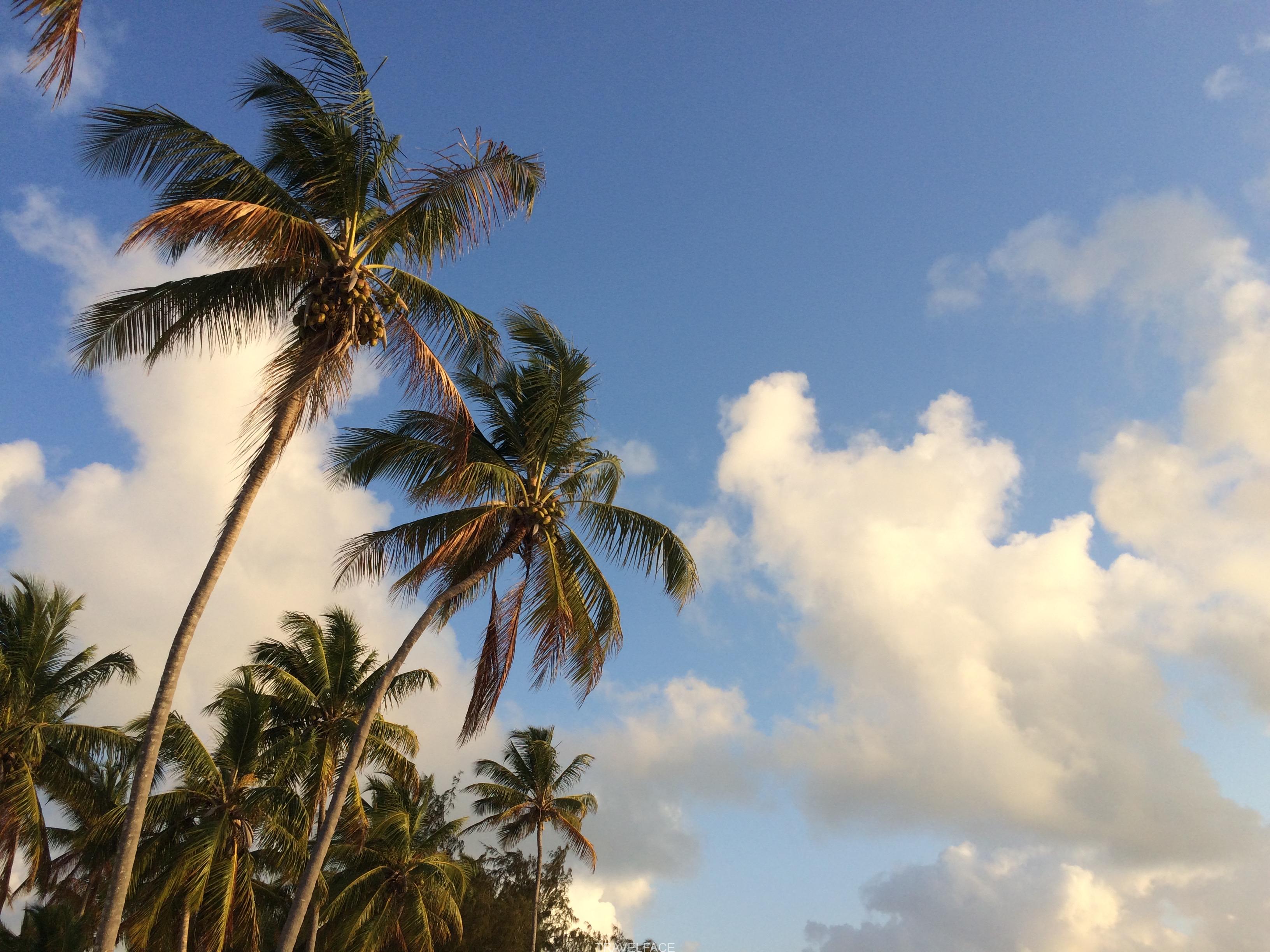
how should i spend the rest of my time in tanzania?
It depends on how long you have. I had just over 2 weeks so followed the typical itinerary of including a safari and beach time. I decided to do a 2 day safari before Kilimanjaro to acclimatise and have a few days to relax. Then I flew from Arusha with Precision Air (one of the smallest planes and airports I have visited) the day after finishing Kilimanjaro to Zanzibar, where I spent five days relaxing at the beach and in Stonetown.
If you have longer than this you can look into flying to Seregenti National park or visiting several national parks like Ngorongoro crater for safaris, or taking the ferry over to Zanzibar from Dar Es Salaam what is a cheaper option that allows you to check this city out also.
Read more about my safari and time in Zanzibar
Still unsure? I have compared my experiences of Everest Base Camp and Kilimanjaro here
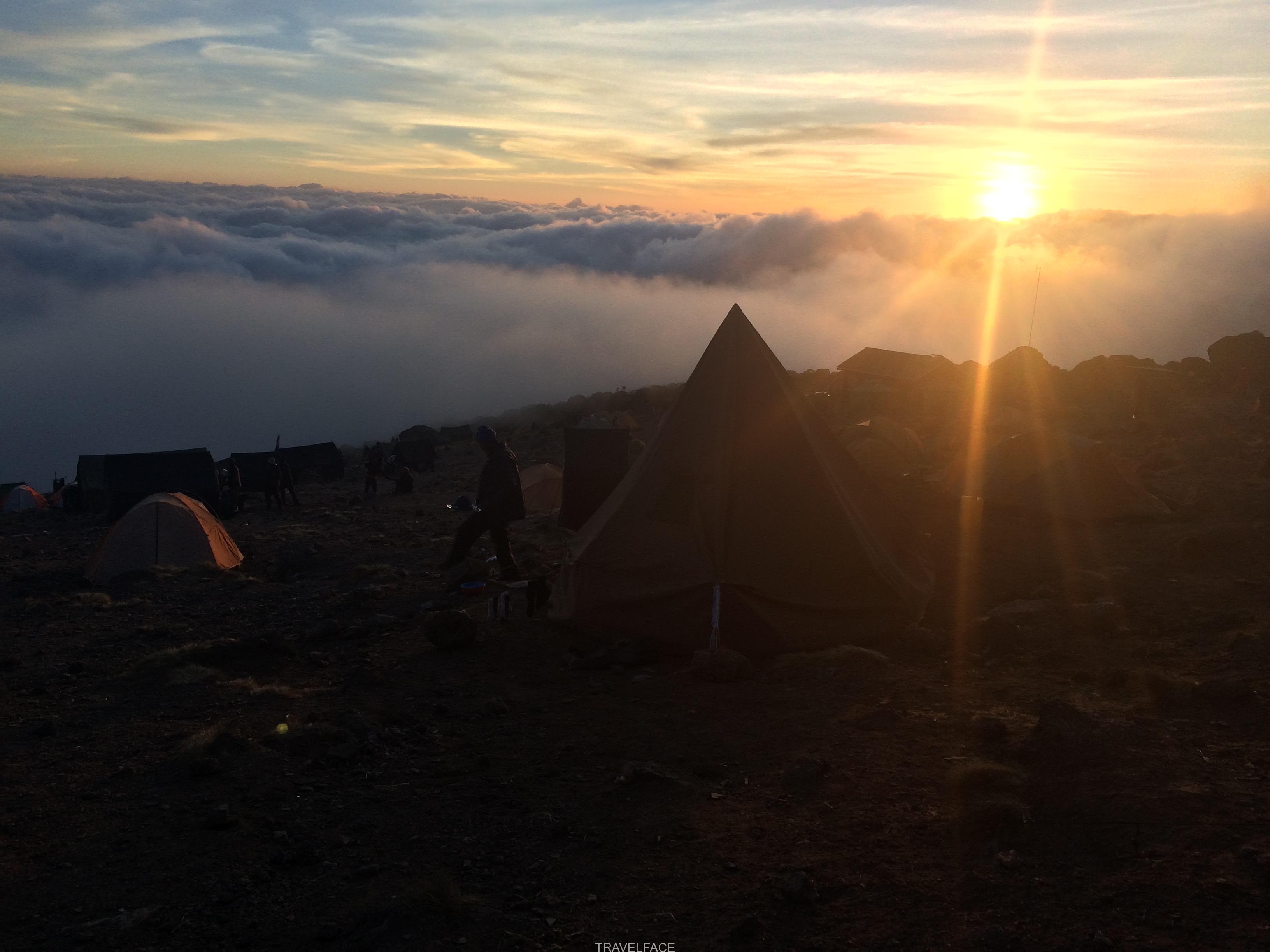

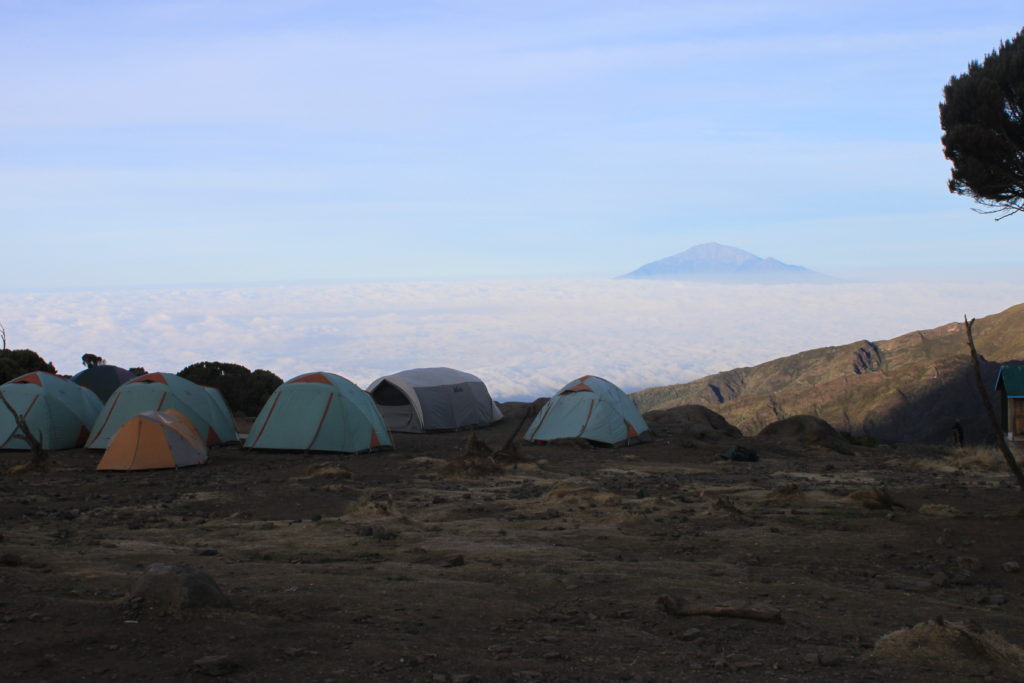

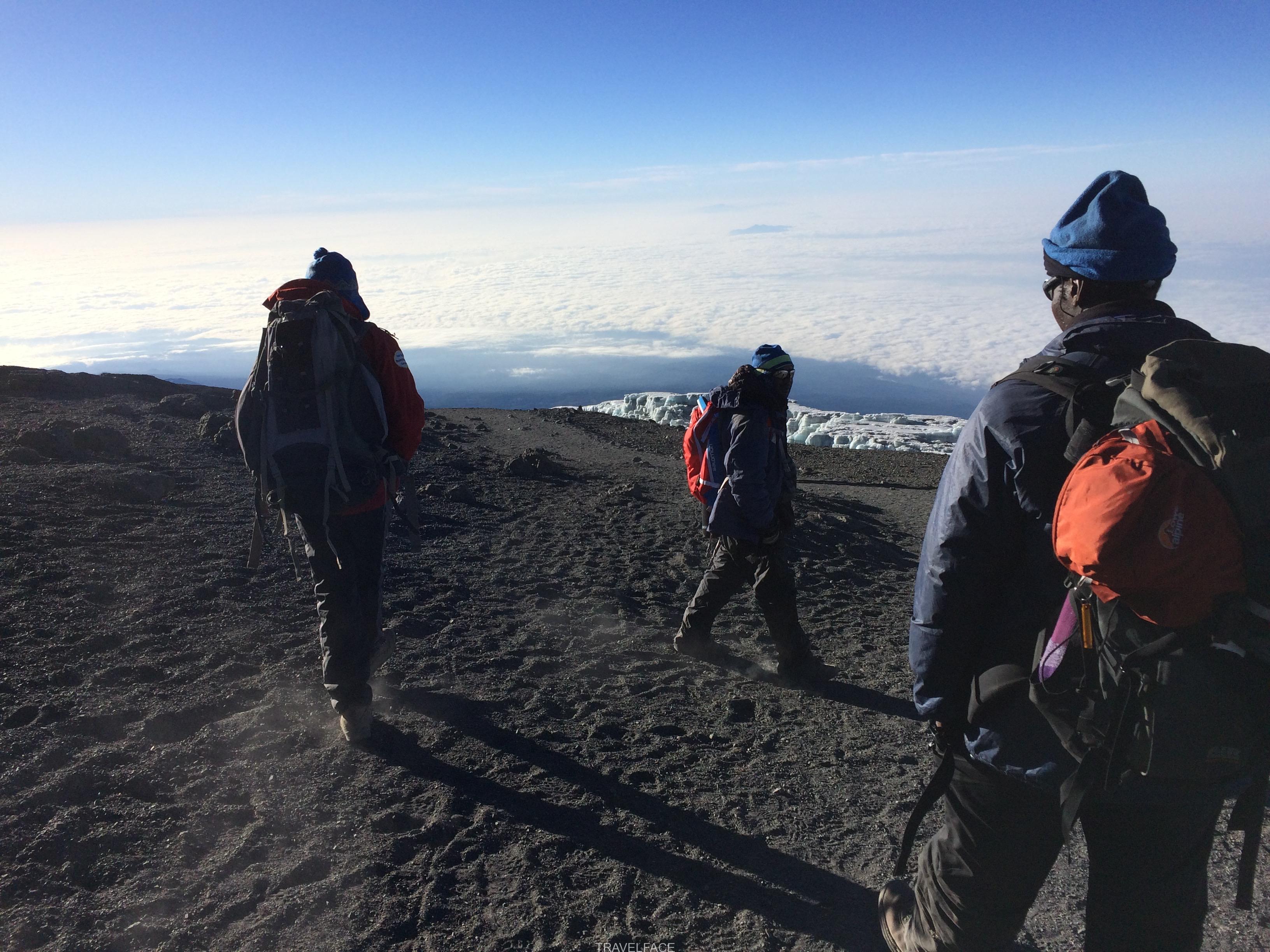
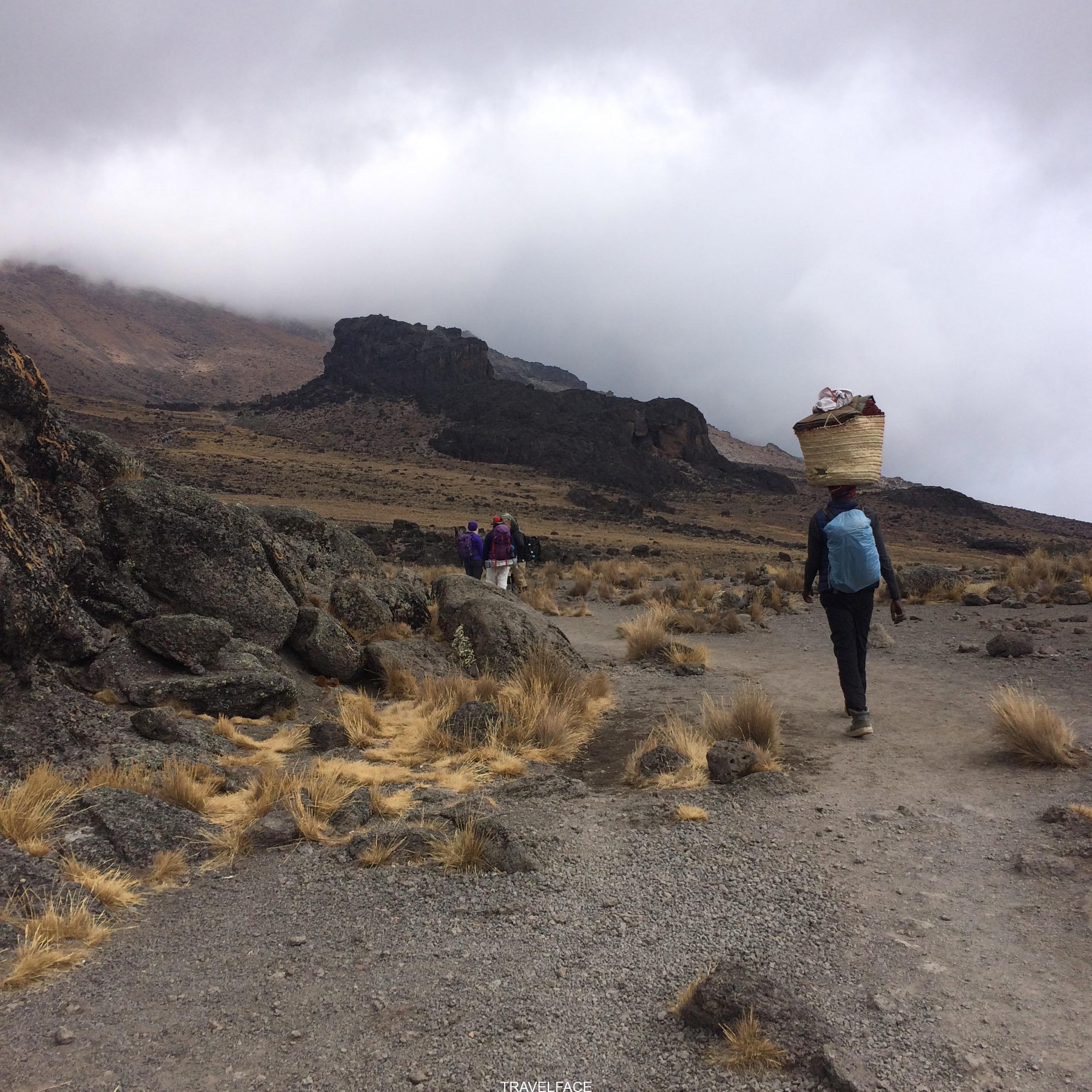
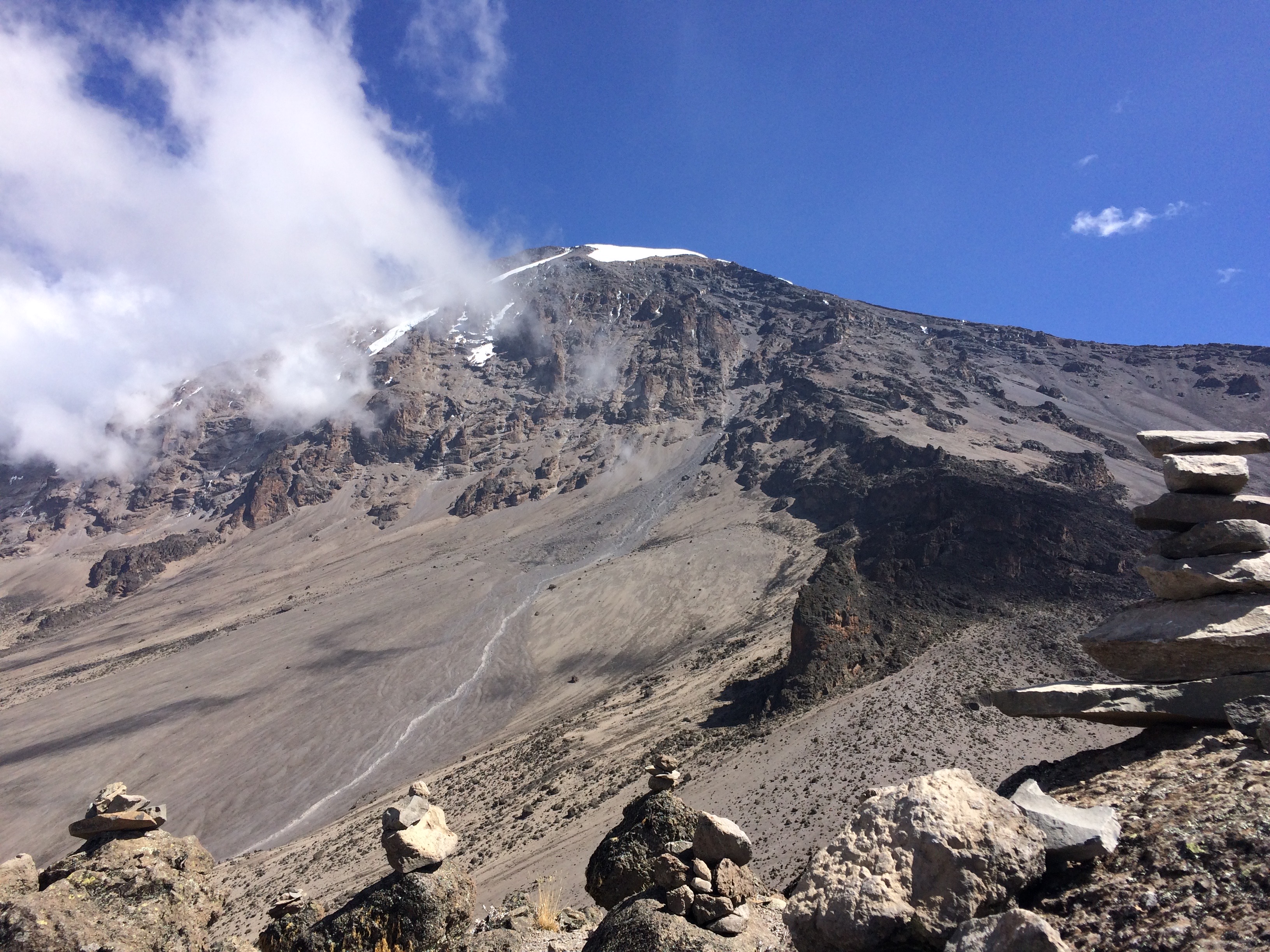
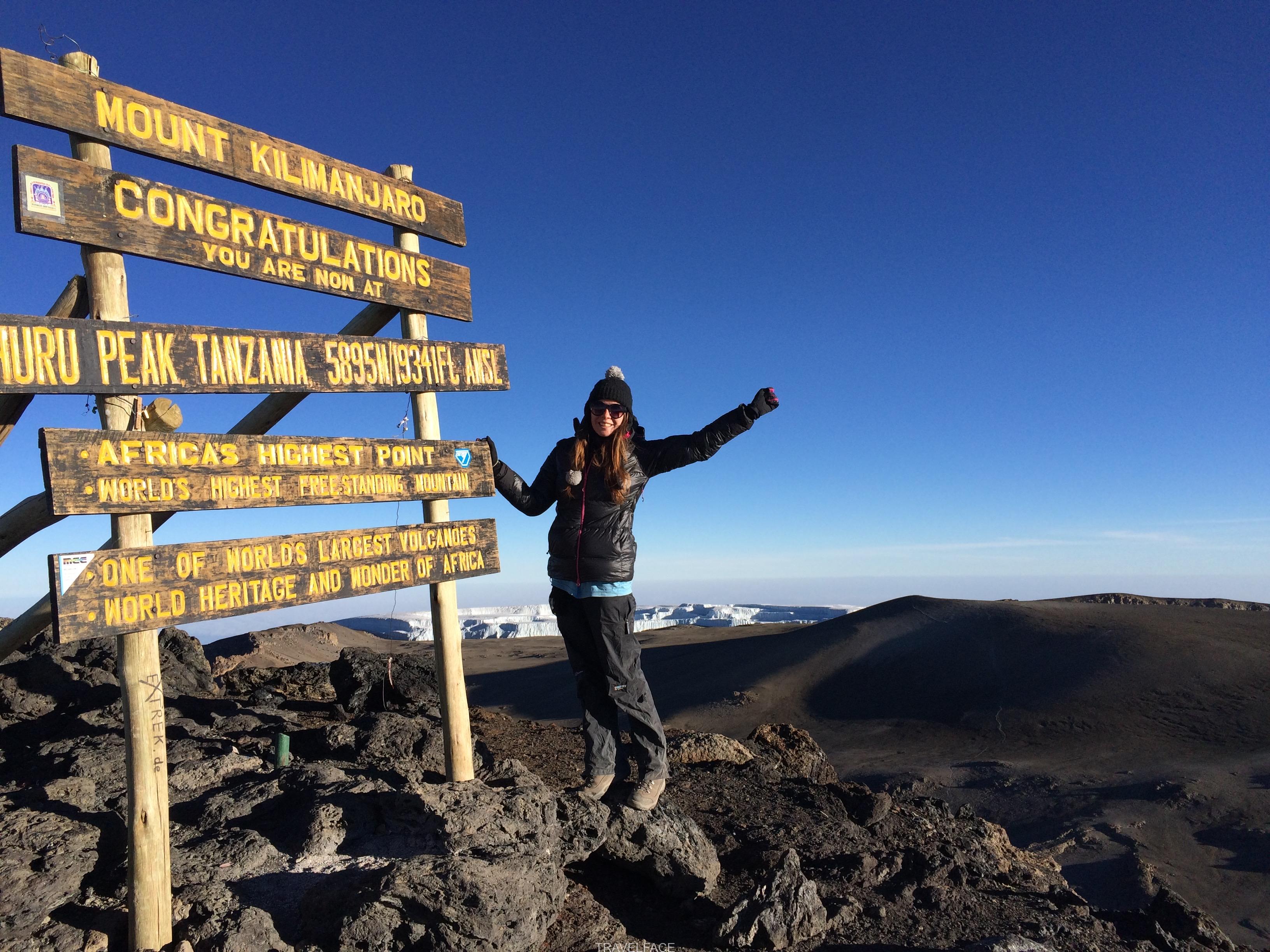
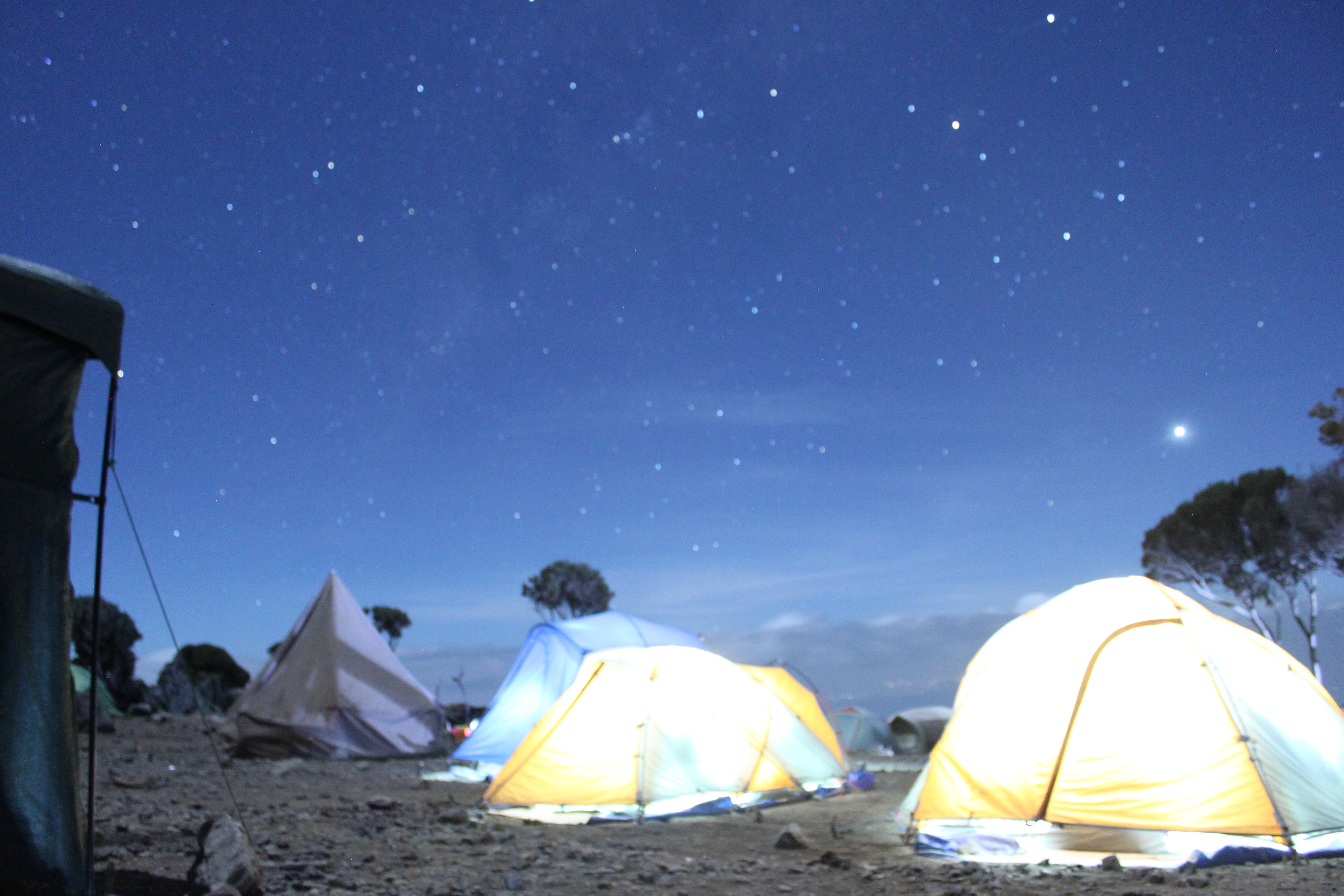
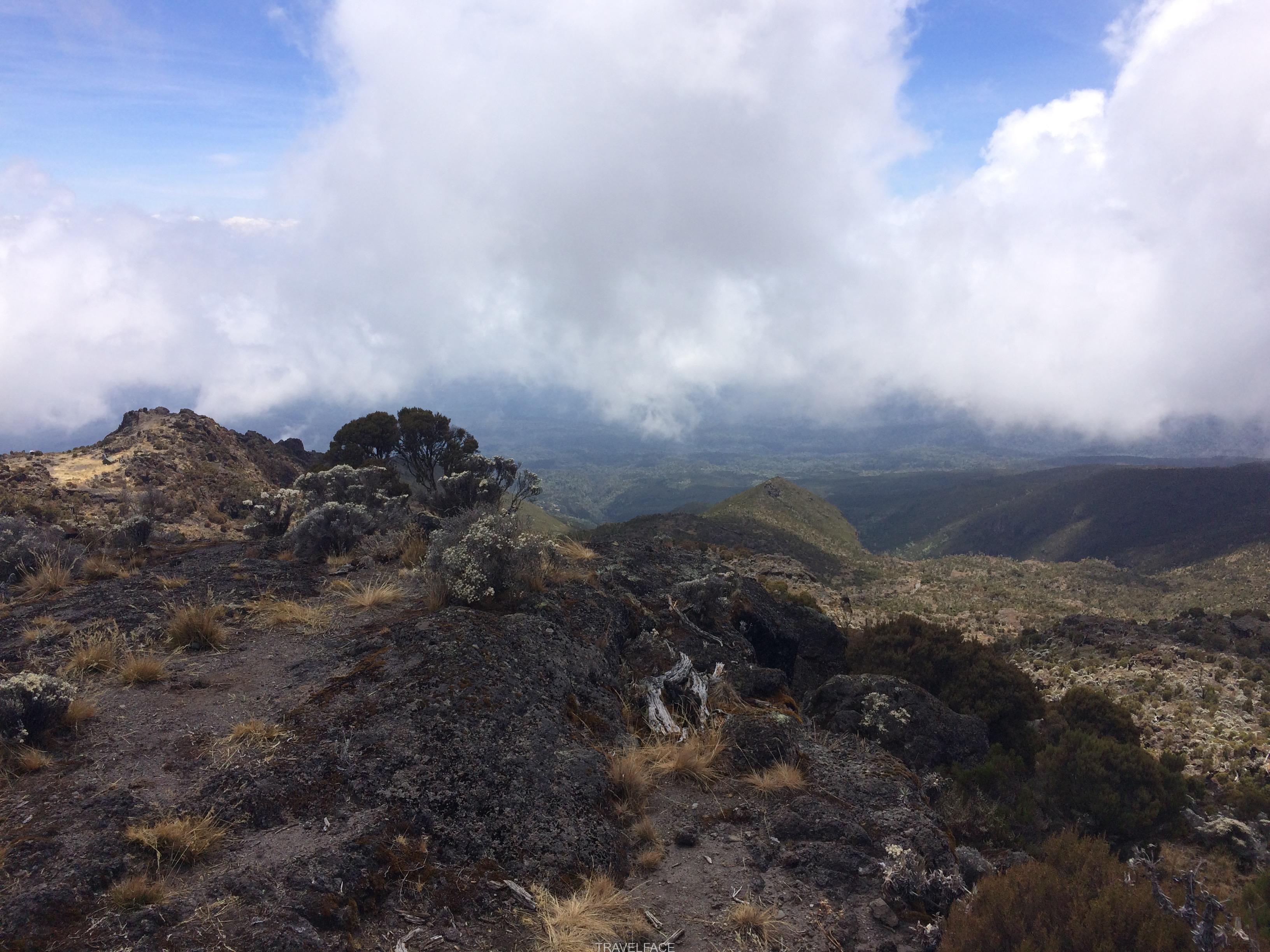
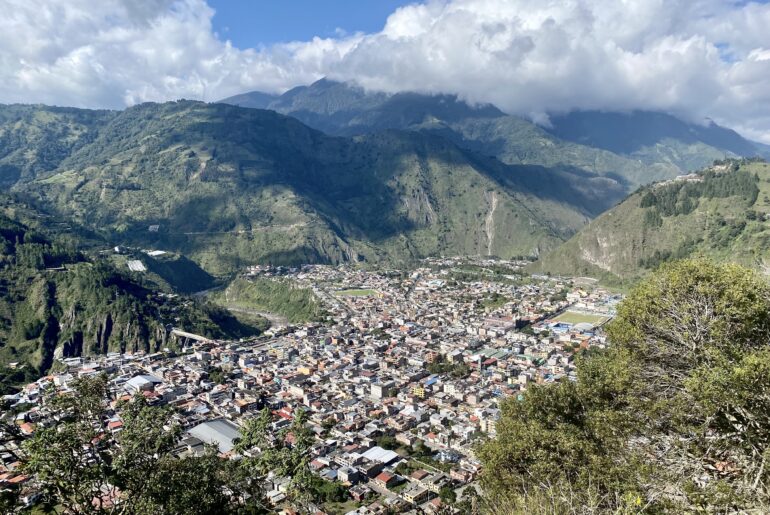
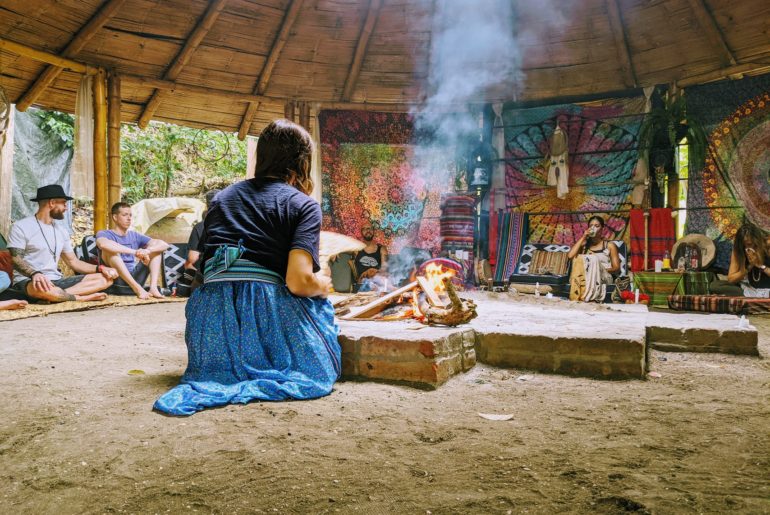
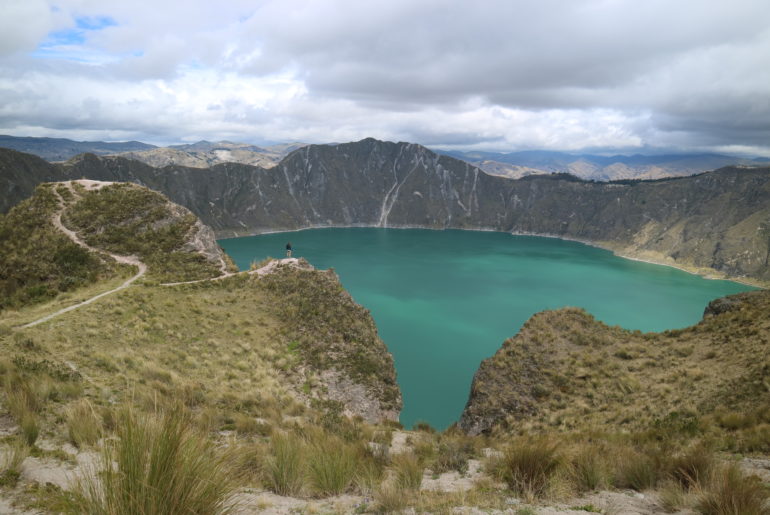
25 Comments
This guide is great! I have always been hesitant to consider a Kilimanjaro hike because I struggled at high altitudes in Peru (even though I acclimatized slowly over a few days) but it’s great to know that it is accessible for almost every traveler.
Thank you Carly, so pleased it was helpful for you! Every time is different so you may find you are fine next time you hike at altitude, especially on a longer route option. I was worried when I did Everest Base Camp after experiencing headaches whilst climbing Kilimanjaro, but I found I was able to prepare for it more knowing what to expect. Good luck!
I can’t believe I came across this, as I was JUST talking about wanting to do it (as well as a few others) earlier today! I love the fact that you really researched what the company does and how they treat their people, as I’ve always wondered what it would be like to carry everyone else’s things. Did it make you feel bad having someone else carry that stuff, or were they more/less happy to help? Definitely bookmarked this post for when we do decide to take it on! Any regrets or things you would have done different?
Yay I am so glad it has come at a helpful time. I wrote this post after struggling to find answers to all my questions in one place, so I hope this helps you. Yes- it was hard to get my head around at first, but by talking to the porters I learnt that some work their way up to be guides, and off-season go home and work on their farms and in their villages. For them working in tourism is their livelihood so they depend on it, and enabled some to fund their children’s educations. However, it was still hard to see , especially those working for other companies with inadequate gear. I think going with an ethical company who are part of the porters association, giving fair tips and bringing any gear/ giving away any at the end are helpful steps to take to help.
Hmm no regrets as such, I would take less next time for myself (see my packing list for info!), but I wish I took out more gear to give away… and backed up my phone music playlist- total fail when I started the trail and realised I would have no music to see me through!
I hope this is helpful, any further questions let me know! I am excited for you!
This is great and comprehensive! Great job!
Thank you for your kind feedback!
I don’t see mountain hiking of any kind in my near future. This is a fantastic resource for anyone thinking of climbing KILIMANJARO.
Thank you very much- I hope you have fun whatever travelling you decide to do!
Wow Kilimanjaro looks stunning! I just came back from a trek to Mount Everest Base Camp and totally get how challenging yet fulfilling this type of adventure is. Wonderful guide!
Thank you! Aw amazing- I have a comparison article on the two actually, like you say there are some similarities like how challenging/ fulfilling they are, and some differences! Nepal is beautiful! Well done!
WOW! What a bucket list item! This would be fantastic to do. You’ve created a great resource. I’m definitely saving this for when I am adventurous enough to do this.
Thank you very much, any other questions just let me know! Do it!!!!
Such great info here! I have researched this trip so many times, but haven’t quite booked it yet! Especially good to know little tips like not having currency older than 10 years…I would not have known that, and haven’t read it anywhere else!
Thank you Leigh! I am glad it is helpful for you. If you have any other questions let me know . I hope you get it booked soon!
I knew Kilimanjaro trek was tough, but had no idea it was this tough. At 16000 feet, and with all the breaks it seems doable for the fit. Sadly I don’t think I am there yet, but hopefully I’ll be able to reach the top of this amazing peak.
Ah I am sure you could do it, as you can go at your own pace! But you are right, it is more comfortable the fitter you are- however altitude sickness can impact anyone. I hope you manage to get there ! Thanks for the comment.
I soooo want to climb Kili but the altitude sickness makes me nervous. I just got back from Nepal, where i had some issues (nothing serious) despite having a LOT more time to acclimatize. One other question — it sounds like most of the hiking days are just a few hours. What do you do with all the rest of the time? were you ever bored just sitting around the campsites?
I can imagine- in some ways I felt more nervous going to Nepal after Tanzania as I knew what to expect. It does vary each trip- some say EBC is harder as you have to stay at altitude for longer, so you never know!
By the time I had an afternoon snack/ hot drink with my group, wandered around the campsite and potentially did a mini acclimatisation hike, it was nearly time for dinner. After that they generally check your pulse etc, give you a lowdown on the next day then you go to bed! Similar to Nepal trek days at times. Having said that, I was appreciative to have something to read after a couple of short days- and would spend some time resting in my tent. I was never bored but there was definitely down time. With a good group, music/ book and making use of the acclimatisation hikes you should be fine. Some days are longer and it depends on your pace- we walked super slow but one guy did struggle to get used to this pace and the short distances as he felt completely fine.
I can imagine if all your group walk fast without issue (unlikely) then you’d have a lot longer at the campsites which could be frustrating.
Sorry long reply there, but if you have any other questions let me know- hope you make it there!
Great info here! Can’t wait to use it when I plan my trip soon. Thanks for sharing
You’re welcome Anna thank you for your comment, so pleased it is helpful for you and you are planning to go! Exciting times have a great trip, and feel free to contact me with any further questions.
Great! I am ready to go! By the way do you have a youtube channel?
Yes go go go!! No I do not have one for travelface, I have previously made some videos on my hikes on my personal youtube I can send if interested!
Pingback: Tungurahua Hike: 5023m Up Without A Guide - travelface
Pingback: Hiking Cotopaxi: An Unsuccessful Cotopaxi Summit Attempt - travelface